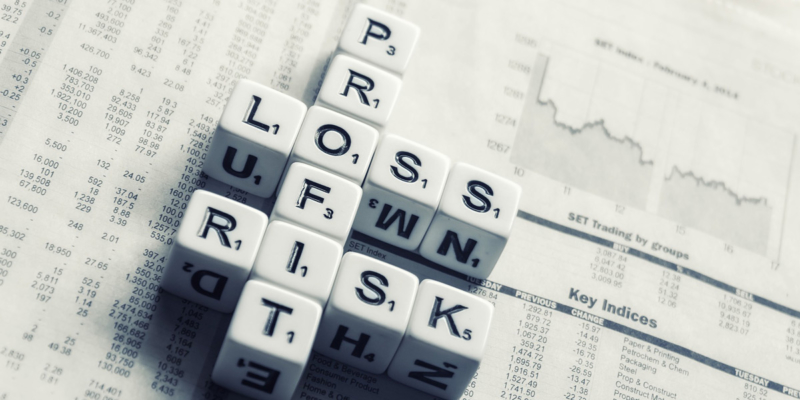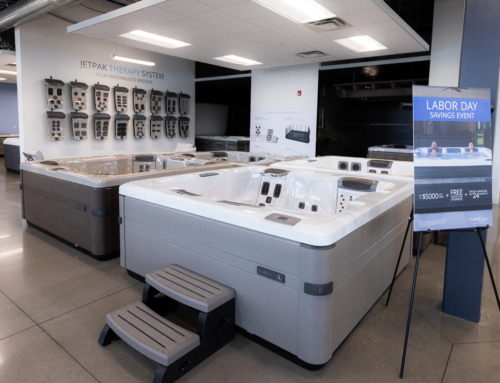Did you know that one way to make more money is effective management of the money you already have? In the hectic, day-to-day running of a business, it’s easy to neglect to monitor your finances on a regular basis. The start of a new year is the perfect time for a renewed commitment to the financial health of your spa dealership.
Scott Hoyt, Senior Director of Consumer Economics for Moody’s Analytics, forecasts that “core retail sales will increase by 4.7% in 2018.” If this proves to be true, dealers with a firm grip on their finances stand to be in the best position to take advantage of the increase.
You can get that grip by paying attention to three essential financial reports: Profit and Loss Statement, Balance Sheet, and Cash Flow Statement.
Profit and Loss Statement
A profit and loss statement is also referred to as an income statement. The purpose of a profit and loss statement is to determine how profitable the business is by measuring income and expenses starting with revenue and ending with net income using this formula:
Sales Revenue – Cost of Goods Sold – Operating Costs = Net Profit
Profit and loss statements usually cover a specific period of time such as monthly, quarterly, bi-annually, and annually. An important tool for analyzing the health of your business, P&L statements are useful for the following:
- Comparison of sales figures and budget figures
- Documentation of profits for loan purposes
- Preparation of business tax returns
- Evaluation of business strengths and weaknesses
- Identification of what goods and services have the best performance
Your profit and loss statement is a powerful diagnostic tool for showing you what to do more of to have the greatest impact on your bottom line. Also, creating and maintaining P&L statements can help increase revenues and decrease costs:
- Increase revenue: Figures on this statement can show that a certain type of spa could benefit from increased marketing, that it might be necessary to remove a specific spa accessory from your shelves, that focus should be on more successful product lines or simply that a pricing strategy needs reviewing.
- Reduce costs: For a spa dealership, a rising number in service center costs on the profit and loss statement may mean you need to assess your service center staff wages, renegotiate supplier pricing or change suppliers altogether.
Simply speaking, keeping a close watch on profit and loss provides a clear picture of where revenue is strong and where expenses are efficiently incurred, and vice versa. For instance, if you notice a sales increase but a profit decrease, you would know to look for ways to reduce operational costs.
When you foresee a year of steady economic growth, it's time to take the opportunity to look inside the walls of your organization and determine how you can improve your execution, your strategies and your financial systems.
Profit and loss statements provide the best view of your net income by showing whether you have made money or lost money over a given time period. Regularly monitoring profits and losses over different time periods is a good way to ensure the profitability of your business.
Balance Sheet
The purpose of a balance sheet is to ascertain the businesses financial position by measuring assets, liabilities, and shareholder equity at a specific point in time (i.e., Jan 3, 2018). It starts with cash balance and ends with retained earnings. Essentially, the balance sheet indicates how financially healthy your business is at any given moment. It consists of a simple columnar comparison of the value of what you OWE (liabilities and owner’s equity) and the value of what you OWN and who owes you (assets). The two columns should equal the same amount using these equations:
For Corporations: Assets = Liabilities + Shareholder’s Equity
For Sole Proprietorship and Partnerships: Assets = Liabilities and Owner’s Equity
Net income from the P&L statement appears in the Retained Earnings line on the balance sheet, which shows the businesses financial position at a specific point in time. Balance sheets have many uses in a business:
- Tracking overall business performance
- Identifying trends and implementing strategies to strengthen your finances.
- Evaluating your ability to meet financial obligations (current ratio, days cash on hand)
- Assessing how effectively credit is being used to finance your operations (debt ratio, debt to equity ratio)
Balance sheets also provide early warnings for other possible issues such as a lack of cash reserves, which can cause cash flow issues. Low cash is also an indicator that you may not be able to invest in growing the business.
Think of your balance sheet as a snapshot of your business’s financial health on a particular day. You can see current assets and liabilities on a specific date and evaluate whether those assets are sufficient to cover liabilities in the weeks and months to come.
Cash Flow Statement
The purpose of a cash flow statement is to monitor cash movements over a specified period of time (monthly, quarterly, bi-annually, annually) by measuring increases and decreases in cash on hand. It starts with net income and ends with cash balance. Cash flow includes cash from operations, cash used in investing and cash from financing. A typical cash flow statement accounts for a number of operations:
- Inventory
- Accounts receivable and accounts payable
- Investing like selling and/or acquiring assets and equipment changes
- Financing such as repaying loans and acquiring debts
Cash flow statements are important for four basic reasons:
- They tell you where your money went.
- They help you focus on creating extra money.
- They are great Key Performance Indicators (KPIs).
- They assist you in making financing decisions.
The cash flow statement is a way to quantify the success of your business in a common unit of measure: Cash. Specifically, how much cash you generate over specified periods of time, how much cash someone wanting to buy your business is likely to pay, and the amount of cash your business currently has on hand.
How They Work Together
These three statements are a means of tracking and understanding costs which allows you to set your pricing more effectively. For example, the income statement tells you how much you spent on products and merchandise while the balance sheet shows how much you owe your suppliers, but only the cash flow statement can tell you how much cash you actually spent to maintain your product inventory at any given time. In the most basic terms:
- Profit and loss statements monitor company expenses, revenues, losses and gains, but they do not include cash disbursements or cash receipts.
- Balance sheets show, among other items, money owed to but not yet collected by your business
- Cash flow statements report money actually received or paid by the business
Individually, these documents measure profit, ascertain worth, and monitor working capital; collectively, they provide a complete financial overview of your business which is crucial to successful business operations.
Take the advice of Walter Simpson of Ventor Consulting who says, “When you foresee a year of steady economic growth, it’s time to take the opportunity to look inside the walls of your organization and determine how you can improve your execution, your strategies and your financial systems.” So, what do your finances look like for the coming year?









Leave A Comment